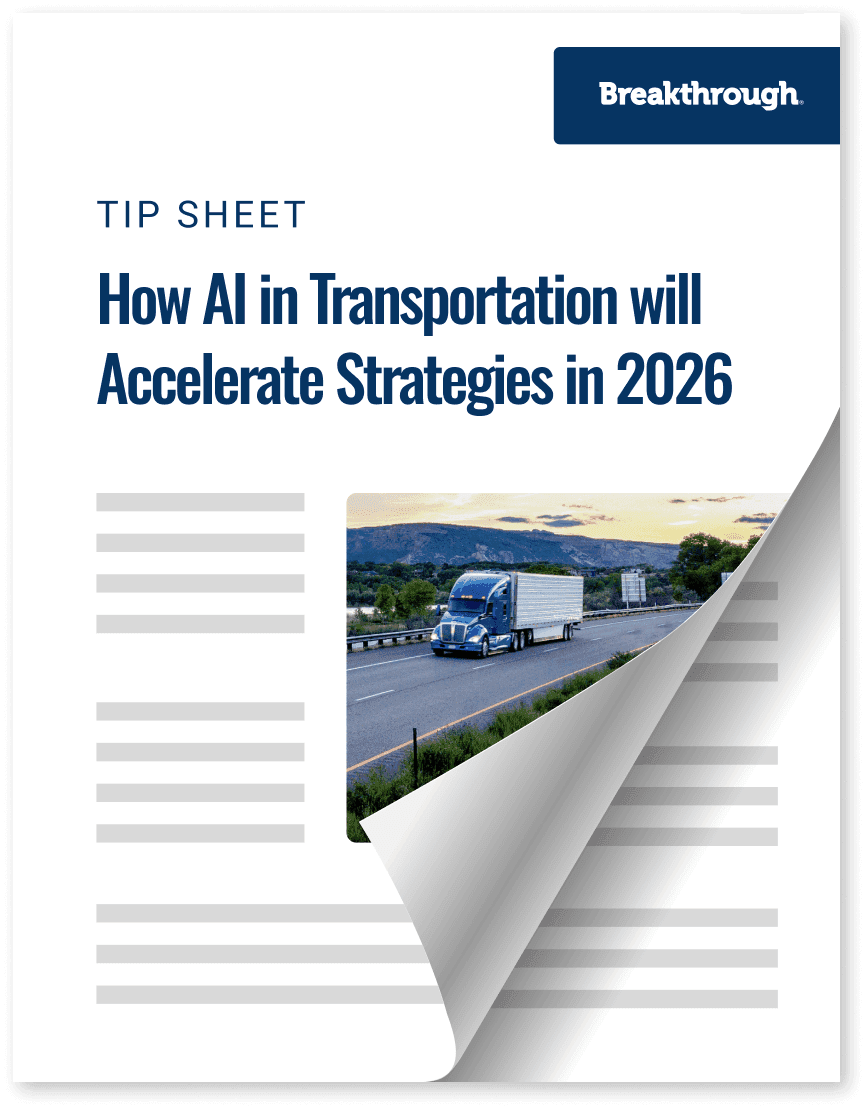How AI in Transportation will Accelerate Strategies in 2026

Trending
Top Posts
Fuel
Why Do Shippers Use The DOE Fuel Surcharge? A History Of The National Fuel Surcharge
5 min read
December 5, 2025
Market Events
How Ukrainian Drone Strikes on Russian Refineries Impact Your Fuel Costs
6 min read
November 20, 2025
Freight
The Definitive Guide on Fuel Management Systems
7 min read
November 11, 2025
8 min read
April 17, 2020

Share:
Table of contents
Browse the table of contents to jump straight to the part you’re looking for
The year 2020 began with a flurry of activity across markets—from the financial sector to crude oil and beyond. Of primary focus is the spread of COVID-19, picking up speed in China in January, and continuing to usher uncertainty into corporate and governmental strategies globally to start Q2. As of this writing, most of the world is anxiously awaiting clarity about the future development of the virus, and ultimately, its mitigation.
This leaves many in economic limbo, as the full impacts of the virus are yet to be defined. Shippers, in particular, have been heavily influenced by the virus – some with significant influxes in freight capacity like that of nondurable goods manufacturers, and others with exceedingly low freight need. COVID-19’s overall influence will largely depend on the duration, the degree of spread, and how long social distancing protocols remain intact as they preclude consumers from typical spending activities.
Read more about how consumers have been impacted by COVID-19, and what that means for shippers in 2020, here.
For shippers, the companies who manufacture and move the goods that keep people healthy, happy, and employed—from cold medicine to video game consoles, to cars—all these economic dynamics are of the utmost importance when adapting 2020 strategies. It is nearly impossible to plan for accurate freight volumes, source capacity, and move goods efficiently without understanding a macro picture of the U.S. economy under COVID-19’s influence.
When economic slowdown is imminent, the need to analyze these dynamics is heightened.
When considering the full scope of economic indicators that have been influenced by COVID-19, one topic has risen to the top for many economists, politicians, and business leaders. That issue is the onset of a recession, which is increasingly imminent: To what degree will this recession be? How long will it endure? How will we recover from it?
The word “unprecedented” is being thrown around a lot—sometimes correctly, but sometimes it is misleading. The term means the phenomena it is being used to describe has _never _happened before. On the surface, slowdowns have happened, spikes in unemployment have happened, recessions have happened. While recessions are always a worry for leaders as they pose very real and very dangerous threats to the livelihood and wellbeing of their people, why has a recession instigated by COVID-19 struck the transportation industry differently?
Every U.S. recession has been different – in its lead up, triggers, duration, and recovery. But we can still look at the themes and trends that emerged from each of them and use them to both compare and contrast the current landscape. This will help shape our expectations, and manage expectations as it relates to the uncertainty facing the market.
The circumstances surrounding the virus are, indeed, unprecedented. When looking at historical recessionary economic events, the current conditions in the U.S. deviate from many norms. In addition, there are some fundamentals shippers can lean on to make rational hypotheses about the future of the market, when consumers will be ready to generate demand for their products, and how to plan for those shifts.
By the National Bureau of Economic Research’s definition, a recession is a “significant decline in economic activity spread across the economy, lasting more than a few months, normally visible in real GDP, real income, employment, industrial production, and wholesale-retail sales.”
Much of the behavior we observed across these economic markets, in addition to inferences we can make based on what we know about the social distancing protocols and consumer sentiment, have led us to believe the U.S.is already at the start of a recessionary period.

Throughout history, significant dips in GDP can be seen as expansion slowed. Of particular note is the significant decrease experienced during the Great Recession from 2007-2009. Source: U.S. Bureau of Economic Analysis, Real Gross Domestic Product [A191RL1Q225SBEA], retrieved from FRED, Federal Reserve Bank of St. Louis; https://fred.stlouisfed.org/series/A191RL1Q225SBEA, April 17, 2020.
From an economic standpoint, the business cycle naturally gives way to periods of economic and financial expansion and, consequently, times of recession. Based on this theory, many believe that economic recession is an inevitable phenomenon, but over time we have come to learn from nuances in how these periods are instigated.
– A Shock to Supply or Demand
– A Resulting Decrease in Unemployment
– Measured by the Decrease in GDP
In short, a trigger point disrupts the existing supply-demand balance. That imbalance adjusts the needs of the workforce because people either want fewer goods, or it becomes a struggle to meet their demand for goods. Both circumstances lead to lower production output, and ultimately decreased GDP.
When COVID-19 manifested in the United States, the economy was otherwise healthy across indicators. Growth was happening in most metrics that are often associated with a healthy economy, putting us at the tail end of the longest economic expansion period in U.S. history.
Inflation was below the benchmark 2 percent and unemployment reached its lowest point since 1969. The stock market was on a bull run. In other words, the economy was robust, despite the manufacturing sector struggling in the wake of over a year-long trade war with China.
When the threat of COVID-19 was introduced, all this expansion ground to a sudden stop.

The key difference in today’s economic landscape from recessions in the past is the suddenness with which it onset – as you can see in initial jobless claims. Although these claims are unlikely to endure to this magnitude, it signifies a notable decrease in output, and will likely lead to significant decreases in consumer spending. Source: U.S. Employment and Training Administration, Initial Claims [ICSA], retrieved from FRED, Federal Reserve Bank of St. Louis; https://fred.stlouisfed.org/series/ICSA, April 17, 2020.
Despite disagreements about how the current administration responded to the virus’ threat, and whether it was expedient and proactive enough, from an economic standpoint, this downturn was sudden, drastic, and nearly universal. This is not a decrease experienced solely in niche markets or certain countries. Though varying in degree, the experience is global.
Unfortunately, you cannot know you are truly in a recession until you are firmly rooted in it. This is due to data and reporting lags that fail to formally classify recessionary economic behavior until after the fact, making the operational management of volatile line items, like transportation, difficult on a daily basis.
Transportation is intricately entwined with the health of the economy – a healthy economy provides capital for consumers to spend, which increases the demand for goods to move to market.
To weed through the dense landscape of information and reporting surrounding COVID-19’s influence on markets, relying on robust, trustworthy data and economic fundamentals is key. Although much of the marketplace does, indeed, remain uncertain, we can begin to ground our strategies into the rich data that is currently available in collective networks, historic evidence for trends as they unfold, and market fundamentals.
While data reflecting the virus’ impacts today may not be readily available, understanding how a transportation network fits into the larger economic picture can better prepare you to plan for changing freight volumes—or lack thereof—in the last three quarters of 2020.
To review all of the COVID-19 resources Breakthrough is providing for shippers, visit our resources page.

5 min read
December 5, 2025
The DOE fuel surcharge is an outdated, inaccurate method for fuel reimbursement. Learn why it costs you money and discover a modern, market-based alternative.
Read more
6 min read
November 20, 2025
Understand the impact of Ukrainian drone strikes on Russian refineries. Learn why diesel prices are volatile and how to protect your budget from market shocks.
Read more
7 min read
November 11, 2025
Discover how fuel management systems cut costs, track emissions, and improve reimbursement accuracy for modern freight operations.
Read more